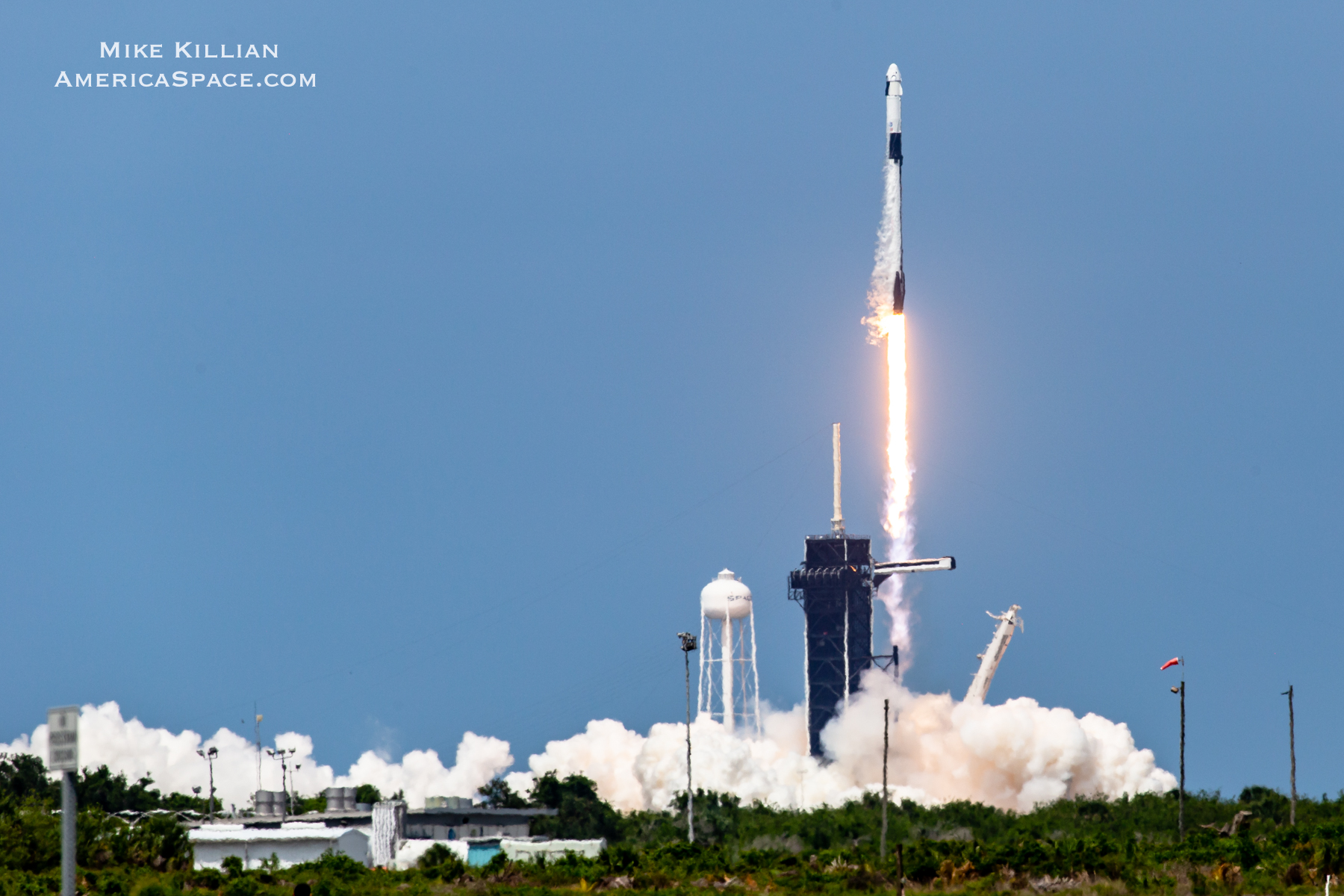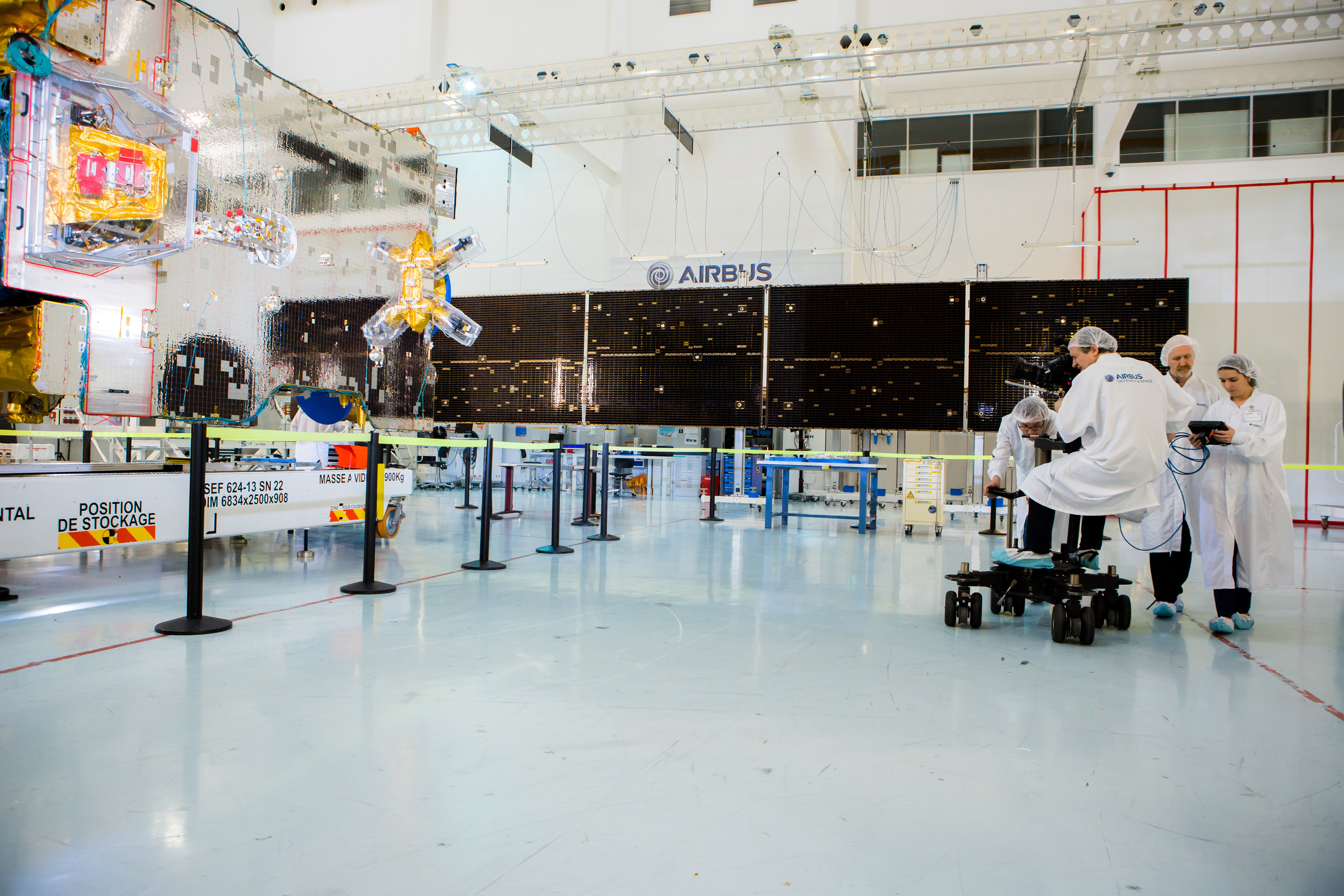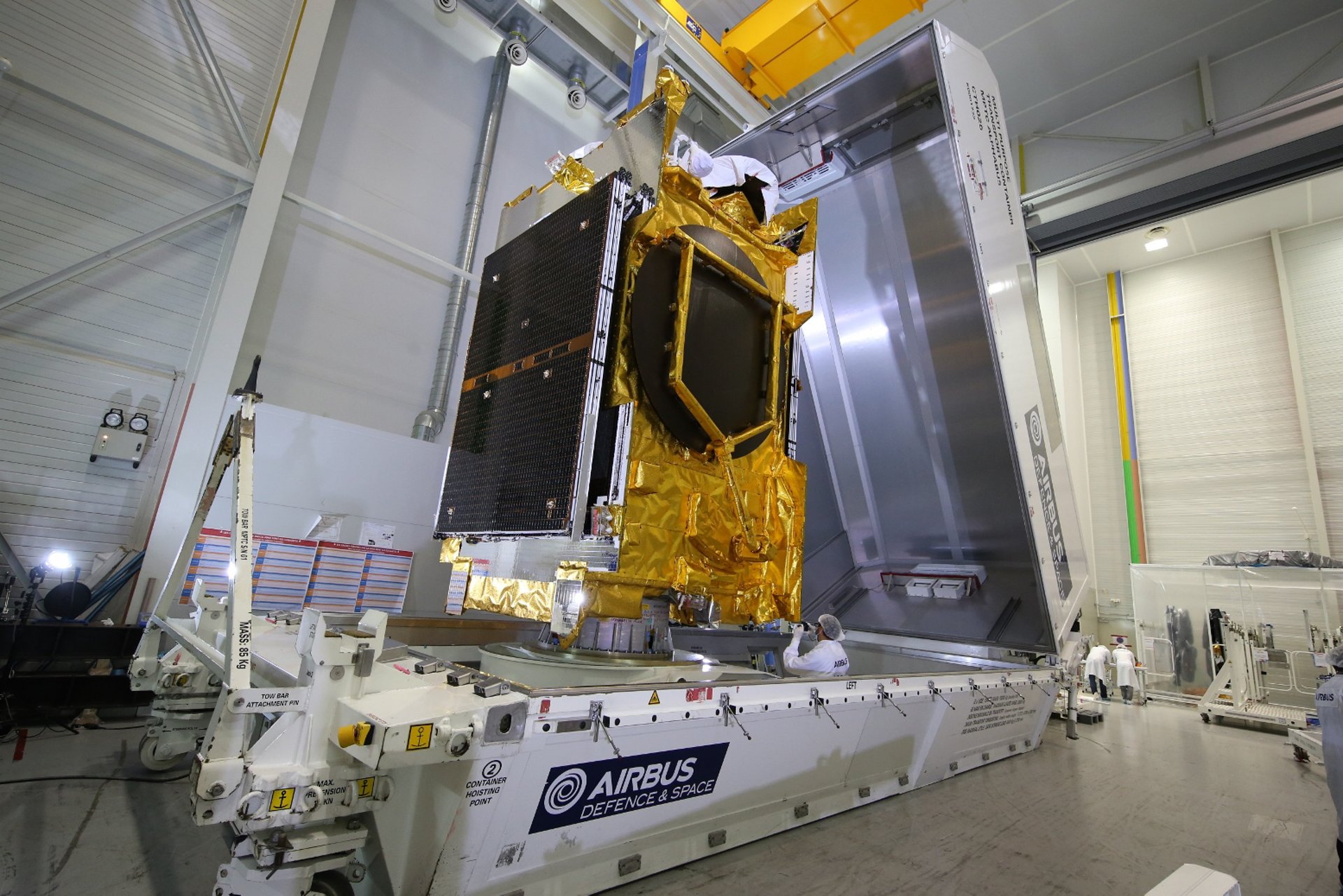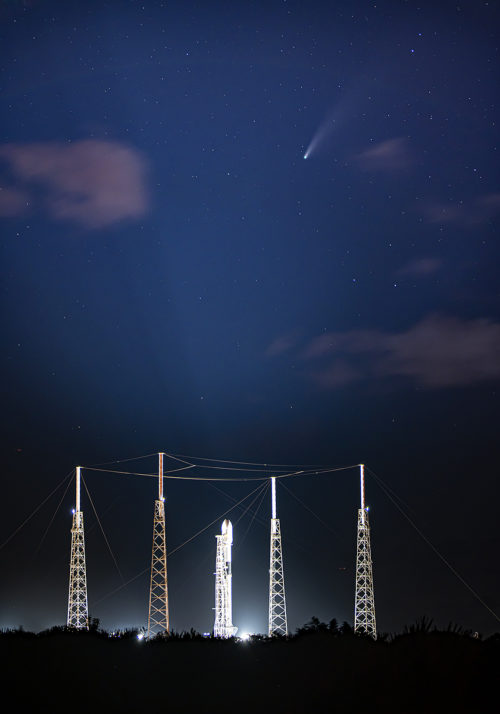
It has been less than three weeks since SpaceX last launched a Falcon 9, but it has felt almost like a multi-month hiatus in operations, with not one but two missions repeatedly delayed by a cocktail of weather and technical problems. All that is expected to end on Monday, 20 July, when the previously-flown B1058 core—which last saw service on 30 May to boost Dragon Endeavour into orbit for “Bob and Doug’s Excellent Adventure” to the International Space Station (ISS)—lifts off from historic Space Launch Complex (SLC)-40 at Cape Canaveral Air Force Station, Fla., laden with South Korea’s first secure military communications satellite, ANASIS-II.
In so doing, B1058 should set a new launch-to-launch record of 51 days between two flights by a single Falcon 9 core and also eclipse the now-retired Space Shuttle Atlantis for the shortest interval between two missions by a reusable orbital-class launch vehicle.
Follow our ANASIS-II LAUNCH TRACKER for updates & LIVE COVERAGE starting at 4:45pm EDT!
Following its historic launch from storied Pad 39A at the Kennedy Space Center (KSC) on 30 May, B1058 separated from the rapidly ascending Falcon 9 at 2.5 minutes into flight, before executing a controlled re-entry and perfect bullseye touchdown on the Autonomous Spaceport Drone Ship (ASDS), “Of Course I Still Love You”, out in the Atlantic Ocean.
And even as Doug Hurley and Bob Behnken, aboard Dragon Endeavour, barreled their way through second-stage flight, bound for low-Earth orbit, B1058 sat silently atop her deployed landing legs on the drone ship, her first foray to space over. Less than three days later, on 2 June, scarred and blackened from that dynamic ascent and descent, she returned triumphantly to Port Canaveral, with a single question on many lips: Would this history-making booster end her days in a museum or would she fly again?

It did not take long for the answer to come. In recent weeks, murmurs abounded that B1058 was indeed being prepared for a quickfire turnaround and a re-launch as soon as mid-July for her second mission. And it was very quickly realized that such a launch would again catapult it into the record books. Not only had she become the first commercial booster to launch humans, but she would also eclipse Space Shuttle Atlantis for the shortest launch-to-launch interval of any reusable, orbital-class vehicle.
Atlantis launched her first flight, Mission 51J, on 3 October 1985, returning four days later from a classified Department of Defense assignment. And on the night of 26 November, she launched again for her second orbital voyage, Mission 61B, which set a launch-to-launch record of 54 days.
That record remained unbroken for more than three decades. Until now.
But if B1058 flies Monday, it will set a narrowly-won record. Following delays to a previously scheduled Starlink/BlackSky mission, which fell foul to weather and technical troubles and was scrubbed three times in June and early July, B1058 and a sparkling-new upper stage were rolled out from the Horizontal Integration Facility (HIF) to SLC-40 on 12 July. Once there, the booster was put through a customary Static Fire Test of its nine Merlin 1D+ first-stage engines and launch was set for the 14th.
Unfortunately, on the evening prior to launch, SpaceX called a halt to proceedings. “Standing down from tomorrow’s launch of ANASIS-II to take a closer look at the second stage, swap hardware if needed,” the Hawthorne, Calif.-based organization noted. “Will announce new target launch date once confirmed on the Range.”

In the meantime, another Falcon 9 booster—including the four-times-flown B1051 core—has succumbed to three launch scrubs in as many weeks. Originally targeted to fly in late June, weather and time conspired against her mission to deliver 57 Starlink internet communications satellites and two BlackSky Earth-imaging satellites into orbit and she was postponed until after the higher-priority GPS III-03 mission.
With that flight safely conducted, launch teams aimed to get the Starlink/BlackSky mission off the ground on 8 July, but their plans were scuppered by poor weather. Another try on the 11th also came to nothing as SpaceX declared a need for “more time for checkouts”. Even as ANASIS-II succumbed to its first launch scrub, B1051 was being returned to a horizontal position and on 15 July was returned to the HIF. Her next target date for launch remains unclear.
However, it soon became clear from the 45th Weather Squadron at Patrick Air Force Base that SpaceX would press ahead with ANASIS-II during a lengthy “launch window” opening at 5 p.m. EDT and closing at 8:55 p.m. EDT Sunday. Weather conditions were initially predicted at about 60-percent-favorable, but in its Saturday morning update the squadron improved its assessment of the outlook to 70-percent-favorable.
“A disturbance currently tracking across South Florida will move westward…bringing scattered showers and thunderstorms to the Spaceport,” it reported on Saturday. “As this feature moves away from the area tonight into tomorrow, somewhat drier air will filter into Central Florida, resulting in decreased coverage of showers tomorrow into Monday.” This produced a generably favorable picture for both Sunday and the backup date of Monday, with possible infringement of the Cumulus Cloud Rule and the Surface Electric Field Rule forming up as the only violating factors.


Eventually, late Saturday, the official word came from SpaceX. “Targeting Monday, July 20 for Falcon 9 launch of ANASIS-II from SLC-40,” it was noted in typically clipped fashion. The launch window will extend from 5 p.m. through 8:55 p.m. EDT. The Falcon 9 will follow a conventional fueling and launch routine, after which B1058 is expected to land on the ASDS some 8.5 minutes after liftoff. The second stage will then ignite for 5.5 minutes in the first of two “burns”, ahead of the ANASIS-II deployment, some 32.5 minutes after leaving the Cape. But as the satellite itself is tasked with a mission for the South Korean military, we will not get to see the deployment. “Per the customer’s request,” SpaceX reported, “live coverage will end shortly after first-stage landing.”
Assuming an on-time liftoff Monday, 51 days will have elapsed since B1058 last speared for the skies. In doing so, it broke the previous Falcon 9 launch-to-launch record of just over 62 days, set by the B1056 core between its second-to-last flight in December 2019 and its untimely end-of-mission demise in February 2020.
.
FOLLOW AmericaSpace on Facebook and Twitter!
.
.






The Best!